After taking an airshow sabbatical during all of 2024, I was pleased to discover an aircraft at Sun ‘n Fun 2025 that I had never reviewed.

Let’s discover more.
Saberwing and Spyder
Based in Quitman, Georgia, Azalea’s Saberwing was designed for amateur builders seeking a speedy two seater in the LSA description. It has not qualified as a Special LSA but designer and company CEO Bill Clapp said he will consider meeting Mosaic LSA standards when released later this year.
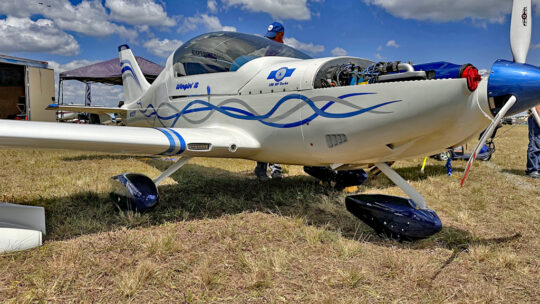
Construction is a composite-foam sandwich with wood wing spars and ribs. Saberwing was designed with a low parts count to simplify assembly. Bill’s elegantly simple wing is composed of two skins, six ribs, and a spar. The kit can be configured with tricycle or taildragger landing gear with optional wheel pants as shown in the nearby images.

In the light aircraft space, few companies attempt both airframe and engine. In so doing, Saberwing joins Sonex and Jabiru who offer both. Saberwing’s standard engine is a 100 horsepower Spyder Corvair conversion of the air-cooled, flat-six automotive engine. A turbocharged version, as shown nearby, outputs 120 horsepower and allows higher elevation operation.
Saberwing kit contains airframe structural components, controls and linkages, composite parts (cowling, canopy), motor mount, fuel tank hardware, pumps, pedal assembly, wheels, brakes, and nose gear or tailwheel kit.
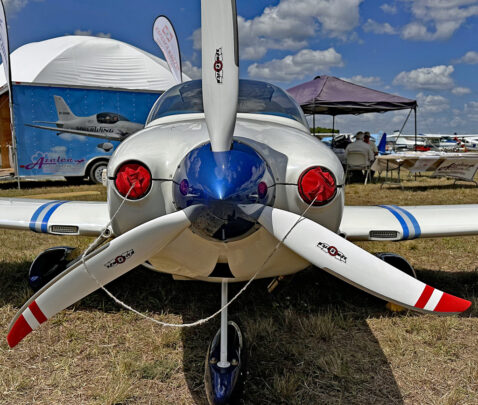
Anything you build will require maintenance and Saberwing has one great design element to ease a mechanic’s effort. Not only does the cowl fully uncover the engine but just aft a removable forward deck allows stand-up (not lay-on-your-back) access to all the avionics connections and control linkages in that area.
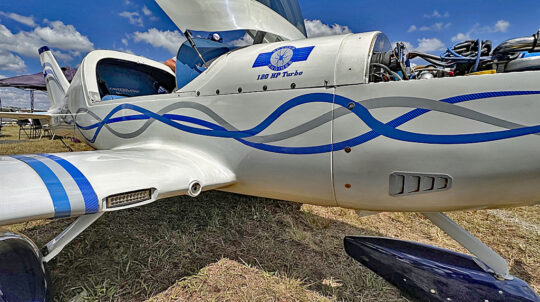
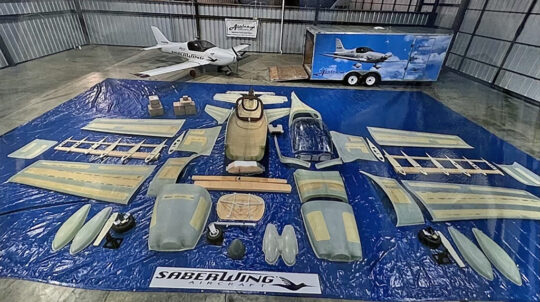
Multiple kits have been sold, with eight aircraft signed off and flying as of this year’s Sun ‘n Fun, Bill confirmed.
What Do Owners Think?
Saberwing owners and builders are reported to appreciate the kit’s quick assembly, spacious cabin, smooth-running Corvair engine, and cost-effectiveness. They like the aircraft’s handling and performance.
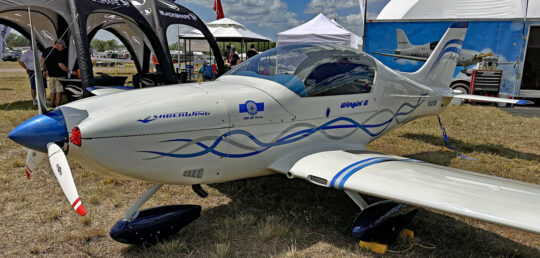
While some have spoken about two fatal accidents (see below), the Saberwing and Spyder have advocates as presented via comments to the video below.
TECHNICAL SPECIFICATIONS
Azalea Aviation Saberwing with Spyder powerplant
all information supplied by the manufacturer
- Cabin — 43 inches wide at shoulders; fits pilots up to 6’6″
- Empty Weight — 900 pounds
- Useful Load — 700 pounds
- Never-Exceed Speed — 200 miles per hour
- Maximum Speed — 180 miles per hour (195 miles an hour for 120 horsepower turbocharged engine)
- Cruise Speed — 150 mph
- Stall Speed — 55 mph (at 1,500 pounds)
- Powerplant — Spyder Corvair six cylinder
- Fuel Burn (100 horsepower) — 5.0 to 5.5 gallons per hour
Tragic End
After the video below was completed some readers wrote about these fatalities in Saberwing. One of these incidents took the life of the owner pictured below.
While I am deeply sorrowful over any and all losses of life in LSA or Sport Pilot-eligible kits, blaming the airframe or engine may be premature.
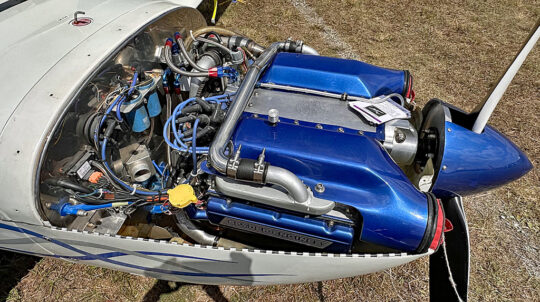
YouTube commenter @boldasthelion6496 replied, “[If] you knew the two pilots who were killed you would know the back stories. NEITHER fatal mishap is attributable to a problem or defect in the Saberwing airframe or the power plants involved.
“The first fatality was due to a pilot attempting aerobatics he was not trained for. He had zero experience in this realm. That lack of experience cost him his life.
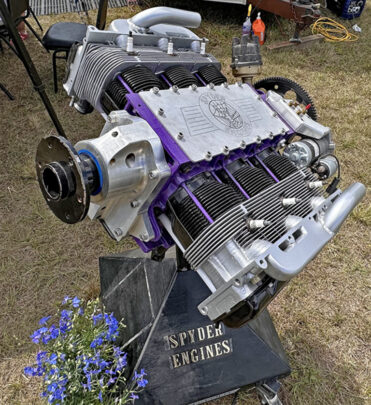
“For reasons unknown to anyone but the pilot, he pressed ahead anyway. I did not ‘know’ either of these pilots other than to have talked to them each once or twice on the phone. In both cases, they exceeded their limits, NOT the limits of the mishap aircraft.
“Aviation is not like driving a car. It is not forgiving. It is not a game. One can find himself in a bad situation with no way out quickly. Sometimes the best solution is not to fly.
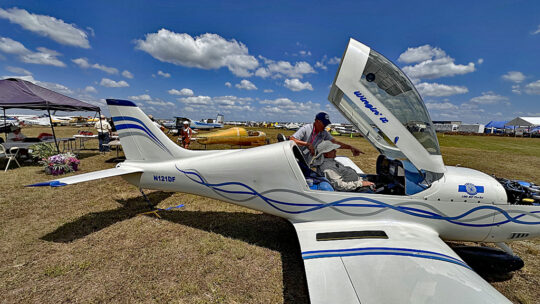
“With this background, I choose to fly the Saberwing myself. The aircraft is safe. The Corvair engine is proven. I minimize risk factors every time I fly because I have grandchildren and wish to still be around to enjoy my great grandchildren.
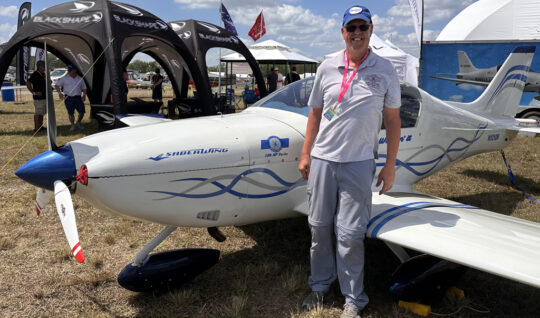
Darcy Freeman and his Saberwing… RIP.
“I am also a veteran of combat sorties over Kosovo, Iraq, and Afghanistan, so I take safety and risk factors very seriously. Do these statements mean I will never have an accident? No. But, I do not go looking for the edges of safety. That is where there be monsters.”
—”ZIP” LCDR USN(ret) Saberwing Builder and Pilot N144PZ
Contributions from readers and viewers add to our knowledge base. I appreciate all who comment respectfully.
For all pilots, advice my father gave me as a young man applies here. “Respect your limitations,” he encouraged.
Please fly safely.



Video didn’t com up.
You are now the second to say you could not open the video. It works fine for me. Can I ask you to reboot and try again? If not, go over to YouTube where it seems to show properly.
Nice article. Could not open & watch the video though.
I’m pleased do you like the article but I can’t explain why you can’t watch the video. I’m having no problems and I have no other reports of difficulty.